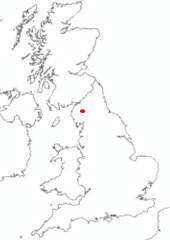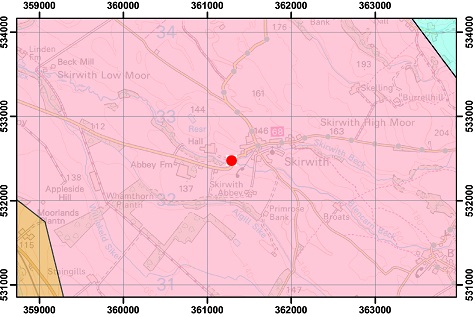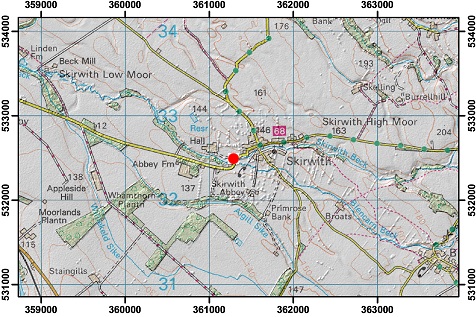Skirwith

This well is used to monitor water levels in the confined Sherwood Sandstone Group to the north-east of Penrith, Cumbria.
Our enquiries service can help you to access groundwater level data for this well.
Hydrograph
Show data from :-
Information about the well
| Skirwith | |
|---|---|
| Wellmaster ID | NY63/2 |
| NGR | 3613 5325 |
| Datum | 133.25 maod |
| Monitoring details | |
| Type | Groundwater Level |
| Aquifer | Permo Triassic Sandstone |
| Confinement | Confined |
| Depth | 89.6 m |
| Record | |
| Monitored by | EA North West |
| Records commence | 1978 |
| Records end | Active |
Hydrogeological setting

St Bees Sandstone Formation overlain by about 3 metres of superficial till deposits. The well lies within a deep basin of Permo-Triassic rocks.
The water level is confined, and varies from the maximum level (131.8 m AOD) lying within the superficial deposits to the minimum level (129.35 m AOD) lying in the St Bees Sandstone Formation.
Well or borehole construction
The borehole was 89.62 m deep when drilled in June 1978, but had backfilled to a depth of 88.57 m by September 1985. It is a 196 mm diameter borehole lined with 7.0 metres of plain plastic lining from the surface.
Hydrograph response
The hydrograph has an annual sinusoidal pattern. There is a note on the file that barometric pressure effects are observed which account for abnormal low values.
Data issues
Limited data for 2001 as access was restricted due to the Foot and Mouth outbreak.

Acknowledgements
At a national level, groundwater level monitoring data is collected and managed by the Environment Agency (England), the Scottish Environmental Protection Agency, Natural Resources Wales and the Department of the Environment (Northern Ireland). Access to the data they collect (which includes many monitoring sites beyond those highlighted on these pages) and curate is online in England (DEFRA) and Scotland (SEPA).
Contact
Contact Contact enquiries for further information






